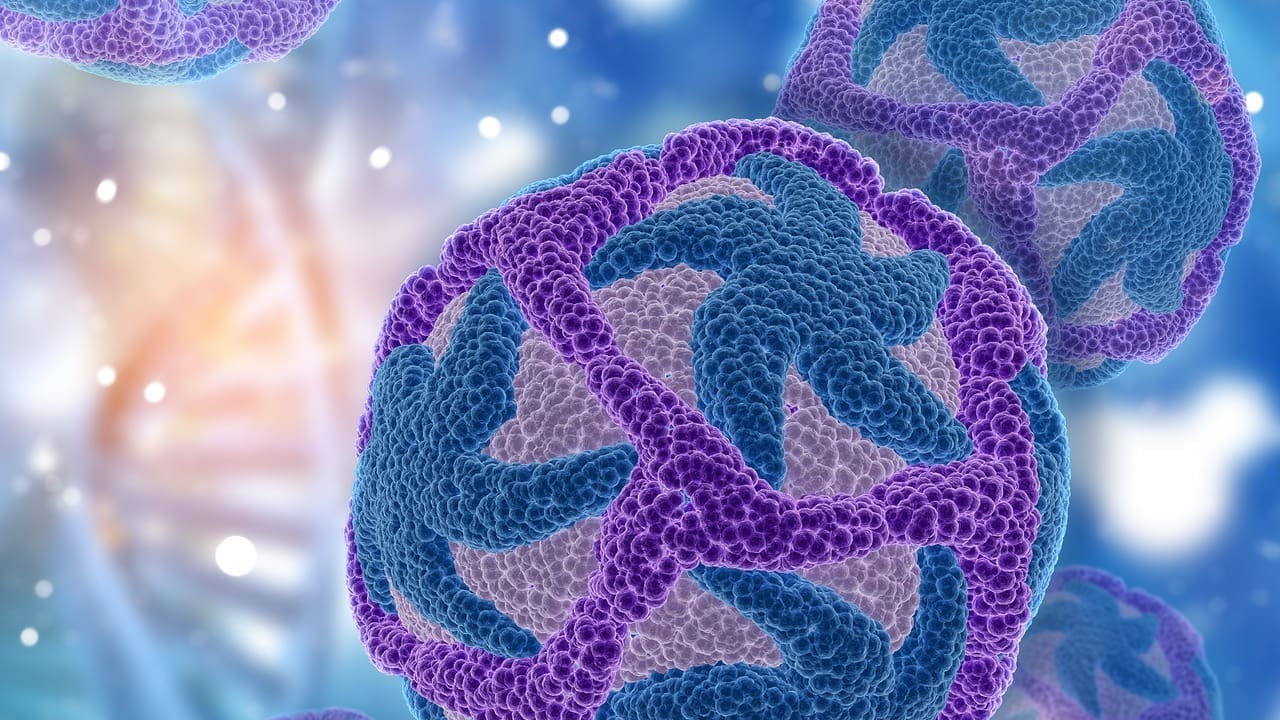Last Updated on November 27, 2025 by Bilal Hasdemir

Many patients find the terms ‘cancer-free’ and ‘remission’ confusing. They are often used the same way, but they mean different things. At Liv Hospital, we know how scary a cancer diagnosis can be. We also understand the confusion around the terms used during treatment.
We will look into the differences between ‘cancer-free’ and ‘remission.’ We will also talk about why cancer can come back even after 5 years of being ‘cancer-free.’
Key Takeaways
- The terms ‘cancer-free’ and ‘remission’ are not always synonymous.
- Being ‘cancer-free’ doesn’t guarantee that the disease won’t recur.
- Recurrence is possible even after 5 years of being ‘cancer-free.’
- Understanding the nuances between ‘cancer-free’ and ‘remission’ is key for patients.
Understanding Cancer Terminology
It’s key for patients to understand cancer terms to know their diagnosis, treatment options, and future outlook. The language in oncology can be complex. This makes it important for clear talk between doctors and patients.
The Importance of Clear Medical Communication
Clear talk in cancer care is vital. It helps patients understand and follow their treatment plans better. Good communication lowers anxiety and uncertainty, helping patients make better care choices.
When doctors use precise words, patients get a clearer picture of their health. For example, “No Evidence of Disease” (NED) means no cancer is found by current tests. Explaining these terms can greatly affect how patients feel and plan their treatment.
| Term | Definition | Implication |
|---|---|---|
| Cancer-Free | No detectable cancer | Positive prognosis, but requires ongoing monitoring |
| Remission | Reduction or disappearance of cancer symptoms | May need ongoing treatment; recurrence possible |
| No Evidence of Disease (NED) | Current tests show no cancer | Does not guarantee cancer won’t return |
How Terminology Affects Patient Psychology
The words used in cancer care can deeply affect a patient’s mind. Saying a patient is “cancer-free” can bring relief, but “remission” might make them worry about the future. Knowing the fine points of these terms can help manage what patients expect and lessen worry.
Why Distinctions Matter in Treatment Planning
The difference between “cancer-free” and “remission” is not just about words. It affects how treatment is planned. For example, someone in remission might need ongoing treatment to stop cancer from coming back. But someone who is cancer-free might have a different follow-up plan. Using the right terms helps make treatment plans that fit each patient’s needs.
By getting and using cancer terms right, doctors can improve patient results, better talk with patients, and plan treatments more effectively.
Defining Remission in Cancer Treatment
When cancer patients are told they are in remission, it means the disease is under control. But what does that really mean? Remission is when the signs and symptoms of cancer are reduced or have disappeared. This is key in cancer treatment, showing if the therapy is working.
Partial Remission: What It Means for Patients
Partial remission means a big reduction in tumor size or cancer amount, but not gone completely. This is checked through tests like CT scans or MRI. For example, if a tumor shrinks by at least 30%, the patient is in partial remission.
Key characteristics of partial remission include:
- A noticeable decrease in tumor size
- Improved symptoms
- Ongoing treatment to achieve complete remission
Complete Remission: Signs and Significance
Complete remission means no detectable cancer in the body. Some call it being “cancer-free.” But, it’s important to know that complete remission doesn’t always mean the cancer is cured.
The significance of complete remission lies in its implications for patient care and prognosis. Patients in complete remission get regular tests to watch for any signs of cancer coming back.
How Doctors Determine Remission Status
Doctors use tests and assessments to see if a patient is in remission. These include:
- Imaging tests (CT scans, MRI, PET scans)
- Blood tests for tumor markers
- Biopsies in some cases
The tests’ frequency depends on the cancer type, stage, and treatment plan. Knowing about remission criteria helps patients understand their cancer journey better.
By explaining the different remission types and how they’re determined, we can grasp the details of cancer treatment. Remission, whether partial or complete, is a big win in the fight against cancer.
What “Cancer-Free” Really Means
It’s important for patients to know what ‘cancer-free’ means after treatment. This term is linked to No Evidence of Disease (NED). It means no cancer is found by current tests.
Limitations of Current Diagnostic Methods
Today’s tests can’t find all cancer cells. Small groups or dormant cells might not show up. This is why ‘cancer-free’ is a clinical guess, not a sure thing.
- Imaging techniques have resolution limits.
- Blood tests may not detect microscopic disease.
- Biopsies are invasive and not always feasible.
Why “Cancer-Free” Is a Clinical Assessment, Not an Absolute State
‘Cancer-free’ is based on current info and tests. It’s not a promise cancer won’t come back. Doctors use the best tools and knowledge they have.
“The journey to being ‘cancer-free’ is complex and multifaceted, requiring ongoing monitoring and support.” This deep understanding helps manage patient hopes and gives the right care.
Cancer-Free vs Remission: Key Differences
It’s important for patients to know the difference between being cancer-free and in remission. Both terms show a positive response to treatment. But they mean different things for patient care and future outlook.
Diagnostic Criteria for Each Classification
To be called cancer-free, a patient must have no evidence of disease (NED) after tests. Remission means the disease is controlled but might not be gone forever.
Doctors use tests like imaging and tumor markers to check cancer status. The choice between “cancer-free” and “remission” depends on cancer type, treatment, and health.
Timeline Considerations in Status Determination
The time after treatment ends is key in deciding cancer status. For many cancers, the 5-year milestone is important for recurrence risk.
Being cancer-free for 5 years or more means a lower risk of cancer coming back. But, this risk can change based on cancer type. Remission can be declared at any time if the disease is controlled.
How Doctors Choose Which Term to Use
Doctors look at several things when choosing between “cancer-free” and “remission.” They consider cancer type and stage, treatment, and how well the patient responds.
For example, some leukemia or lymphoma patients in remission might have cancer cells. But, if breast cancer is caught early and treated, a patient might be cancer-free.
Patient Implications of Each Status
Being cancer-free brings relief but doesn’t mean you’re completely safe. Regular check-ups are needed to watch for recurrence.
Patients in remission might need ongoing treatment or monitoring. Knowing their status helps them make better care and lifestyle choices.
| Status | Diagnostic Criteria | Timeline Considerations | Patient Implications |
|---|---|---|---|
| Cancer-Free | No evidence of disease (NED) | Often considered after 5 years | Relief, but continued follow-up necessary |
| Remission | Disease under control | Can be declared at any time | Ongoing monitoring or treatment |
The Reality Behind “There Is No Such Thing as Cancer-Free for Cancer Patients”
The idea that a cancer patient can be ‘cancer-free’ is complex. Terms like ‘cancer-free’ and ‘remission’ are used in cancer treatment. But, they can be misleading if not understood clearly.
Cancer treatment is tough on the body and mind. As doctors, we must guide patients with care and honesty.
Current diagnostic methods like imaging and biopsies have limits. For example, a cancer cell must grow big enough to be seen on scans. This means tiny cancer cells might not be found.
The Possibility of Dormant Cancer Cells
Dormant cancer cells are another hurdle in saying a patient is ‘cancer-free.’ These cells can stay quiet for years before waking up. Studies show some cancers can come back even after five years, though it’s rare.
Having dormant cancer cells shows why long-term care is key. Regular check-ups help catch any cancer coming back early. This can lead to better treatment chances.
| Factors Influencing Cancer Recurrence | Description | Impact on Treatment |
|---|---|---|
| Microscopic Disease | Tiny cancer cells that are undetectable by current diagnostic methods. | Increases the risk of recurrence if not addressed. |
| Dormant Cancer Cells | Cancer cells that remain inactive for a period before potentially reactivating. | Requires long-term monitoring to detect any recurrence early. |
| Detection Limitations | Current diagnostic tools have size and sensitivity limitations. | Necessitates the development of more sensitive diagnostic techniques. |
Managing Expectations in Cancer Care
It’s vital to manage what patients expect in cancer care. Being hopeful is good, but being realistic about recurrence is also key. We work with patients to understand their situation and what care they need.
Being open and honest helps patients deal with their cancer status. We talk about what ‘cancer-free’ really means and the need for ongoing checks. This way, we can help them get the best care possible.
In short, while ‘cancer-free’ gives hope, we must know its limits. By understanding microscopic disease and dormant cells, we can better care for our patients. This way, we meet their needs and manage their hopes and fears.
The Significance of the 5-Year Milestone
Surviving five years without cancer coming back is a big deal for many patients. It shows if the treatment worked well. This time is key for knowing if the cancer might come back.
Why Is 5 Years Cancer-Free Important?
This milestone is important for patients. It means they can move from active treatment to watching their health closely.
We know the journey doesn’t stop here. But, reaching this milestone is a big win. It gives hope for a future without cancer.
Statistical Significance in Cancer Outcomes
The 5-year survival rate is a key number in cancer care. It shows what percent of patients live five years after being diagnosed. This number tells doctors and patients how well the treatment worked.
Studies show the risk of cancer coming back changes with different cancers. For some, the risk goes down a lot after five years. For others, it’s a worry even after that.
How Recurrence Risks Change Over Time
It’s key to understand these changes. This helps manage what patients expect and plan for follow-up care.
Beyond the 5-Year Mark: Long-term Monitoring
Even reaching the 5-year mark doesn’t mean cancer won’t come back. Some cancers can stay hidden for years before coming back. So, watching closely for a long time is very important.
We suggest patients keep up with regular check-ups and tests. Their doctors will tell them when and how often. This helps catch any signs of cancer coming back early.
Monitoring After Treatment: Living with Uncertainty
Many cancer survivors face uncertainty after treatment. They enter a new phase where they need to watch for any signs of cancer coming back. This is done to catch any problems early.
Follow-up Testing Protocols
Regular check-ups and tests are key for cancer patients. These plans change based on the cancer type, its stage, and the treatments used. Follow-up care usually includes:
- Regular physical exams to check for any signs of recurrence or metastasis
- Imaging tests such as CT scans, MRI, or PET scans to monitor internal organs and structures
- Blood tests to check for tumor markers or other indicators of cancer activity
- Other specific tests related to the original cancer type
Signs That May Indicate Recurrence
It’s also important to know the signs of cancer coming back. Patients should watch for:
- New lumps or masses
- Unexplained pain that persists
- Changes in bowel or bladder habits
- Unusual bleeding or discharge
- Other symptoms specific to their original cancer
Finding cancer early can greatly improve treatment options. If patients notice any concerning symptoms, they should see their doctor right away.
Psychological Aspects of Post-Treatment Surveillance
The time after treatment can be tough emotionally. The fear of cancer coming back can cause a lot of worry. It’s important to remember that being “cancer-free” doesn’t mean you’re completely safe.
Understanding what it means to be “cancer-free” and the need for ongoing checks can help patients. By staying informed and connected with their healthcare team, they can deal with uncertainty better. This way, they can focus on staying healthy and happy.
How Medical Professionals Communicate Cancer Status
Talking about cancer with patients is a delicate matter. Healthcare providers must be honest yet empathetic. Good communication helps patients understand their condition and make informed choices.
Evolving Language in Oncology
The way we talk about cancer has changed a lot. Terms like “cancer-free” and “remission” are used, but they mean different things. Brown Health says it’s key for patients to know what these terms mean.
Doctors are always updating their language to keep up with new research. For example, “no evidence of disease” (NED) is now used to describe patients who have finished treatment and show no signs of cancer. This change helps manage patient hopes and fears better.
Patient-Centered Communication Approaches
Effective cancer care focuses on patient-centered communication. Healthcare providers tailor their approach to each patient’s needs. This means explaining medical terms clearly and listening to patients’ worries with compassion.
Balancing Hope and Realism in Status Discussions
One big challenge is finding the right balance between hope and reality. Doctors must share the facts about a patient’s condition while also giving hope for the future.
This balance is key for patients to cope with their cancer journey. For instance, talking about the chance of recurrence and the need for follow-up care can be done in a hopeful yet realistic way. Experts say some cancer treatments have high success rates, which can encourage patients.
Important things to consider include:
- Being honest about the patient’s condition while supporting them
- Explaining complex medical info in simple terms
- Listening to patients’ worries and responding with empathy
- Sharing the latest treatment options and their possible outcomes
By focusing on patient-centered communication and using the latest oncology language, doctors can better talk about cancer with patients. This improves understanding and creates a more supportive and hopeful environment for those facing cancer.
Conclusion: Navigating Cancer Status Terminology
It’s important for patients to know the difference between “cancer-free” and “remission.” We’ve looked at what these terms mean, including how they affect treatment and monitoring.
“Cancer-free” and “remission” have different meanings based on how doctors check for cancer. The “no evidence of disease” (NED) status is key. The 5-year mark is also important for seeing how well a treatment worked.
Good communication between doctors and patients is key. It helps manage hopes and understand cancer status. Regular checks and tests are also important. They help find cancer early and treat it quickly.
As we learn more about cancer, knowing the difference between “cancer free vs remission” helps patients. It lets them make better choices about their care. By understanding these terms, we can support and inform those fighting cancer better.
FAQ
What does it mean to be cancer-free?
Being cancer-free means no cancer is found in the body. But, tiny cancer cells might be hiding. It’s not a complete guarantee.
What is the difference between cancer-free and remission?
Cancer-free means no cancer is found. Remission means symptoms have gone away. Remission can be partial or complete. It shows cancer might come back.
How do doctors determine remission status?
Doctors check for remission with exams, tests, and lab results. They look for cancer signs and treatment success.
What is the significance of the 5-year milestone in cancer care?
The 5-year mark is important because it shows a lower cancer return risk. But, it’s not a full guarantee. Watching for cancer signs is always needed.
Why is clear communication important in cancer care?
Clear talk is key in cancer care. It helps patients feel better and makes treatment plans better. Using the right words helps patients understand and make choices.
What is no evidence of disease (NED)?
No evidence of disease (NED) means no cancer is found. It’s like cancer-free but has its own limits.
How do medical professionals communicate cancer status?
Doctors talk about cancer in a way that’s hopeful but realistic. They use new words to explain complex things clearly and kindly.
What is the importance of post-treatment monitoring?
Watching for cancer after treatment is key. It helps find cancer early and manages hopes. Regular tests and watching for signs are part of this.
Can a patient be considered cancer-free if they have a history of cancer?
It’s hard to say a patient is fully cancer-free if they’ve had cancer before. Tiny cancer cells could be hiding. So, they need to keep being checked for cancer.
How do doctors choose between cancer-free and remission?
Doctors pick between cancer-free and remission based on each patient. They look at the diagnosis, how long it’s been, and what it means for the patient. They choose the best term for each person.
References
- Breakstone, R. A. (2023, April 6). Cancer terms: What is remission, cancer-free, and no evidence of disease. Brown Health. https://www.brownhealth.org/be-well/cancer-terms-what-remission-cancer-free-and-no-evidence-disease
- City of Hope. (2023, April 25). Cancer remission, NED, cancer-free: What the terms mean. https://www.cancercenter.com/community/blog/2023/04/cancer-remission-ned-cancer-free
- MD Anderson Cancer Center. (2021, May 12). Remission, cancer-free, no evidence of disease: What’s the difference?. https://www.mdanderson.org/cancerwise/remission–cancer-free–no-evidence-of-disease–what-is-the-difference-when-talking-about-cancer-treatment-effectiveness-and-results.h00-159460845.html
- National Cancer Institute. (2022, October 14). Understanding cancer prognosis. https://www.cancer.gov/about-cancer/diagnosis-staging/prognosis
- South Australian Health. (2023, October 26). What you need to know about cancer remission and recurrence. https://www.sahealth.com/healthy-living/blog/what-you-need-to-know-about-cancer-remission-and-recurrence
- WebMD. (2023, November 23). Remission: What does it mean? https://www.webmd.com/cancer/remission-what-does-it-mean
- Memorial Sloan Kettering Cancer Center. (n.d.). What does cancer remission, recurrence & cure mean? https://www.mskcc.org/experience/living-beyond-cancer/survivorship/what-cure
- Cancer Research UK. (n.d.). Why some cancers come back. https://www.cancerresearchuk.org/about-cancer/what-is-cancer/why-some-cancers-come-back








